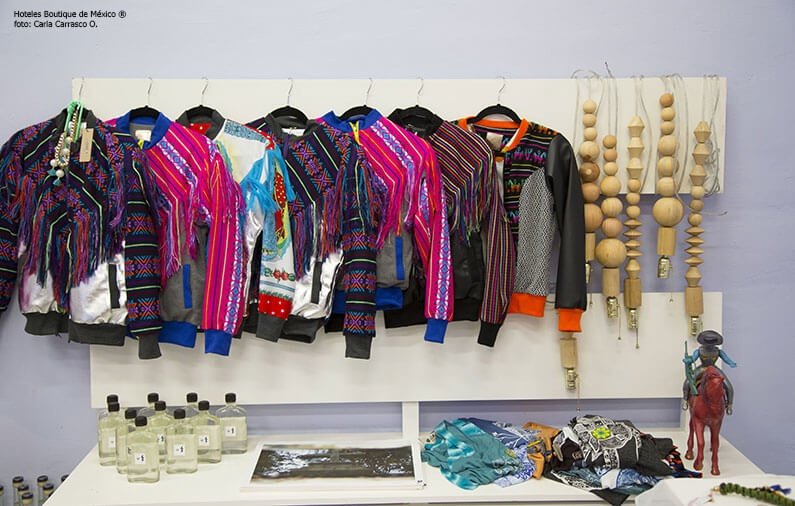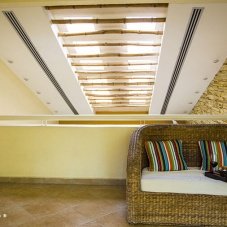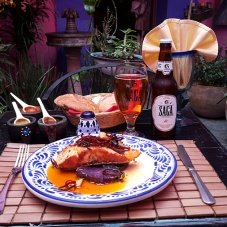
How many times during our trips have we appreciated no Mexican streets beautiful handcrafts with embroidery so precise and detailed that it seems to be made with the most modern machinery? However, in our country we have the privilege of having native artisans in different states who are devoted, individually or in group, to the making of embroidered and frayed textiles, be it in clothes, rugs, cushions, blankets, shawls, purses, etc.
On this occasion, we will talk about this activity, considered a true art in which, although techniques have changed with time, it remains one of the most beautiful and meaningful works of our culture.
A BIT OF HISTORY
According to the information gathered from ancient dwellers, we know that the embroidery works were first made on “hanging warp knitters” where they were made with fingers. With this technique handling cotton was hard to handle, so it was replaced by the “waist knitter”, also known as two-stick knitter, much easier to handle. There is a fixed side and the other side goes to the knitter’s waist. One of the advantages of this technique is that it allows the knitter to have the control of the making of each piece to combine textures, shapes and colors.
There is also the “foot knitter”; this technique comes not from pre-Hispanic times but from the Colonial times. The good side of this knitter is that it can be used to create large clothes, up to 100 -150 meters long.
This is one of the states that features one of the most extensive varieties of embroidered textiles. They have been passed for generations ad naive girls learn it since early age (12 years), from knitting to preparing the fiber (thread preparation and decoration).
Most of the embroidery designs in this states have a distinctive seal of the Mayan culture influenced by Christianism. Tzotzil textiles from Larráinzar, Chenalhó, Chamula, Zinacantan, Pantelhó and Tenejapa are so unique that they can be easily identified.
Chiapas textile designs are very like those from Guatemala, as they have a common origin. Most of the designs are in strong colors such as red, yellow, blue, turquoise, white, purple, ink and dark green, but also some pastel are combined with them. Main patterns include flowers, butterflies and jungles birds.
It is also a state where hand-made embroideries come from ancient times and are vital part of the characteristic culture.
Oaxaca embroideries were originally made with the tip of a cactus or agave leaf. This has changed with time and women now use a metal needle. As with all the indigenous groups in different customs and beliefs, for Oaxacans embroidery represent part of their traditions, dreams and beliefs, based mainly on their surrounding (the region’s nature). In Oaxaca there is a large variety of ethnic groups with women devoted to this art with their own style. Here are some of them:
Mazatecos
The mazateco textile art has as its main feature the cotton clothes with drawings embroidered in light blue or red. They are usually birds, trees and flowers. Some embroidery includes colored ribbons and lace.
Chinantecos
The main characteristic of chinanteco embroidery is that they are made in cotton gauze with two-headed birds and/or colorful geometric and spiral figures with details in ribbons and lace.
Mixes
Embroidery from these communities are very popular and recognized by their huipiles, belts and shawls. They are hand-made on a base of palm to make them fit perfectly.
Zapotecos
From this indigenous community comes the “Make it if you can” style, which has scrunched points with pleats in cotton knitters. The main feature of this knitting style is that the pleats give shape to the colored figures.
Another textile type is the “Istmo”, where women make their pieces (mainly skirts) with uncommon materials such as dark velvet embroidered with big, colorful flowers and a side of pleated silk on the edge of the skirt. From this style comes the famous Tehuana dress.
Who wouldn’t like to have some of these hand-made pieces as part of their wardrobe? Blouses, skirts, dresses and belts full of colors, so typical and yet so elegant that you can wear them on any occasion.
We invite you to visit two beautiful places where you can purchase authentic pieces and also take some relaxation and rest time:
Hotel Argovia Finca & Resort enTapachula, Chiapas
Hotel Hacienda Los Laureles en Oaxaca.
1 855 2236061
- Tags:
- Boutique Tips
Leave a Reply




